
Dorothea Lynde Dix was an American advocate on behalf of the indigent mentally ill who, through a vigorous and sustained program of lobbying state legislatures and the United States Congress, created the first generation of American mental asylums. During the Civil War, she served as a Superintendent of Army Nurses.
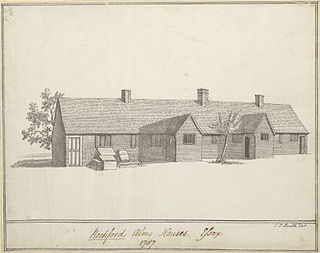
An almshouse is charitable housing provided to people in a particular community, especially during the Middle Ages. They were often targeted at the poor of a locality, at those from certain forms of previous employment, or their widows, and at elderly people who could no longer pay rent, and are generally maintained by a charity or the trustees of a bequest. Almshouses were originally formed as extensions of the church system and were later adapted by local officials and authorities.
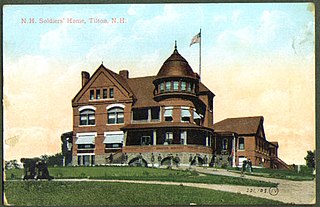
An old soldiers' home is a military veterans' retirement home, nursing home, or hospital, or sometimes an institution for the care of the widows and orphans of a nation's soldiers, sailors, and marines, etc.

John Maynard Woodworth was an American physician and member of the Woodworth political family. He served as the first Supervising-Surgeon General under president Ulysses S. Grant, then changed to Surgeon General of the United States Marine Hospital Service from 1871 to 1879.

A combat medic is responsible for providing emergency medical treatment at a point of wounding in a combat or training environment, as well as primary care and health protection and evacuation from a point of injury or illness. Additionally, medics may also be responsible for the creation, oversight, and execution of long-term patient care plans in consultation with or in the absence of a readily available doctor or advanced practice provider. Combat medics may be used in hospitals and clinics, where they have the opportunity to work in additional roles, such as operating medical and laboratory equipment and performing and assisting with procedures.

The United States Sanitary Commission (USSC) was a private relief agency created by federal legislation on June 18, 1861, to support sick and wounded soldiers of the United States Army during the American Civil War. It operated across the North, raised an estimated $25 million in Civil War era revenue and in-kind contributions to support the cause, and enlisted thousands of volunteers. The president was Henry Whitney Bellows, and Frederick Law Olmsted acted as executive secretary. It was modeled on the British Sanitary Commission, set up during the Crimean War (1853–1856), and from the British parliamentary report published after the Indian Rebellion of 1857.

Westminster Hospital was a hospital in London, England, founded in 1719. In 1834 a medical school attached to the hospital was formally founded. In 1939 a newly built hospital and medical school opened in Horseferry Road, Westminster. In 1994 the hospital closed, and its resources were moved to the new Chelsea and Westminster Hospital at the old St Stephen's Hospital site in Fulham Road.

The Royal Hospital Haslar in Gosport, Hampshire, which was also known as the Royal Naval Hospital Haslar, was one of Britain's leading Royal Naval Hospitals for over 250 years. Built in the 1740s, it was reputedly the largest hospital in the world when it opened, and the largest brick-built building in Europe.

The Ukrainian Red Cross Society is a non-profit humanitarian and charitable association of Ukraine. It operates in disaster management, health and care, tracing service, youth activities/volunteers, and activities related to the protection of human dignity. Since 1993, the Ukrainian Red Cross Society has been a member of the International Federation of Red Cross/Red Crescent Societies.

Leonard Cheshire is a major health and welfare charity working in the United Kingdom and running development projects around the world. It was founded in 1948 by Royal Air Force officer Group Captain Leonard Cheshire VC.

The state of medical knowledge at the time of the Civil War was extremely primitive. Doctors did not understand infection, and did little to prevent it. It was a time before antiseptics, and a time when there was no attempt to maintain sterility during surgery. No antibiotics were available, and minor wounds could easily become infected, and hence fatal. While the typical soldier was at risk of being hit by rifle or artillery fire, he faced an even greater risk of dying from disease.

Beaufort War Hospital was a military hospital in Stapleton district, now Greater Fishponds, of Bristol during the First World War. Before the war, it was an asylum called the Bristol Lunatic Asylum, and after the war it became the psychiatric hospital called Glenside Hospital.
The Veterans Home of California is located in Yountville, California, and was founded in 1884. The facility is the largest of its kind in the United States and has a population of almost 800 aged and disabled veterans of World War II, the Korean War, the Vietnam War, the Gulf War, the War in Afghanistan, and Operation Enduring Freedom/Operation Iraqi Freedom. Several levels of care are offered to residents, including domiciliary services, residential care for the elderly, intermediate nursing care, skilled nursing care, and outpatient clinic.
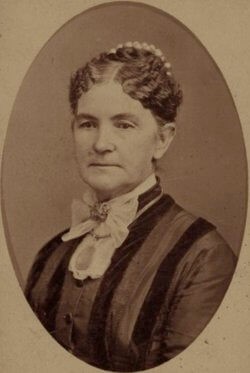
Adaline Weston Couzins was a British-born American civil servant, a suffragist, and a Civil War nurse who worked for the Ladies' Union Aid Society of St. Louis. She spent most of her career as a nurse during the Civil War on hospital ships that tended to Union and Confederate soldiers all along the Mississippi River.
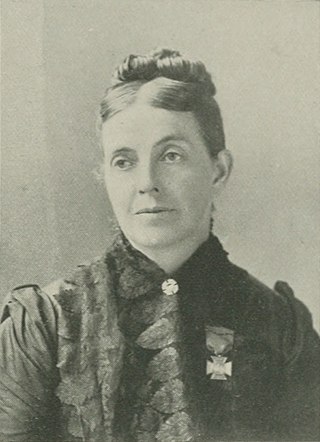
Mary Sears McHenry was an American charitable organization leader who served as the eighth National President of the Woman's Relief Corps (WRC) in 1890, which at the time, was the largest fraternal association in the country.
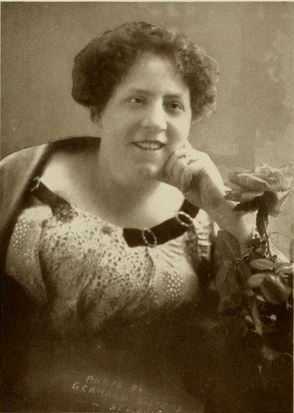
Clara Estella Zeiss Baumhoff was the founder of the Missouri Division of the International Sunshine Society (ISS); in fourteen years of leadership brought more than twenty-five thousand members into the ISS through her press departments on Sunshine, and by her personal efforts.

The Soldiers' Home in Holyoke is a full-service veterans center and hospital located in Holyoke, Massachusetts, which maintains 247 beds in its main nursing facility, and a separate domiciliary care building with 30 full-time residents. The facility provides long-term care and outpatient medical services, as well as dental and social services, and programming and events for veterans. Operated by the Massachusetts Department of Veterans' Services, it is inspected annually by both the state and the United States Department of Veterans' Affairs.

E. Florence Barker was a leader and an activist in the American woman's club movement. She was a co-founder and charter member, of a charitable organization, serving as the first president of the National Woman's Relief Corps (WRC). Elected in July 1883, she understood the need to negotiate cooperation with the parent organization, the Grand Army of the Republic. Barker was an eloquent speaker, and wrote more than a thousand letters during her administration.

Elizabeth C. Keller (1837–1912) was an American physician and surgeon. She was also a member of the Boston School Committee.

Elizabeth Augusta Russell was an American philanthropist, reformer, and restaurateur. She served as National Superintendent of coffee house work for the Woman's Christian Temperance Union (WCTU) and was the founder of the Russell Coffee House in Minneapolis, Minnesota, which, in its day, was the largest coffeehouse in the city.



















